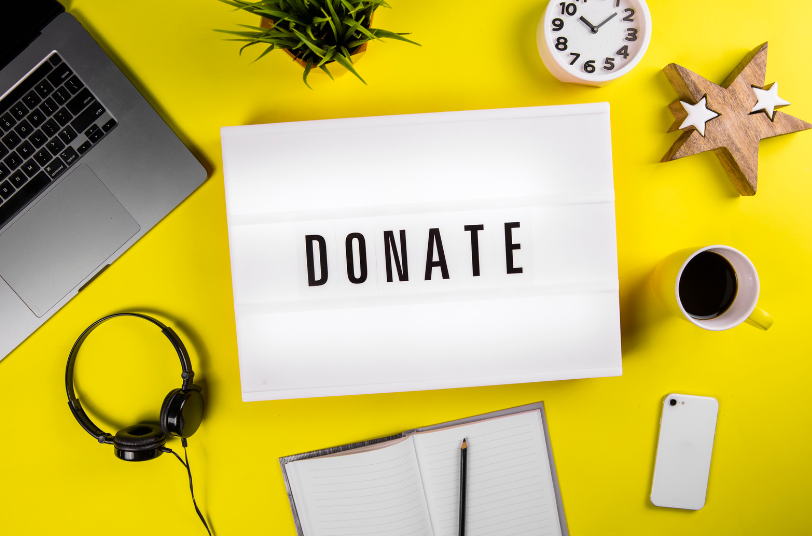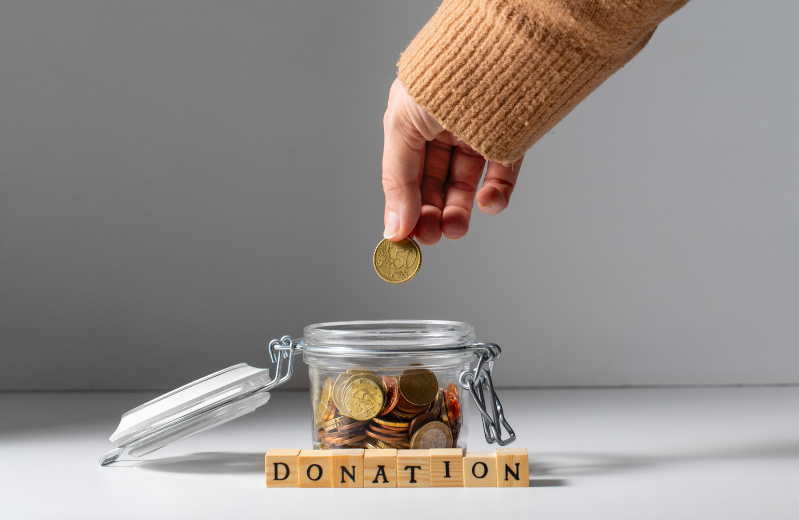Asking for donations is a crucial skill for individuals with a cause and nonprofit organizations alike. When done effectively, it can help you secure the funds needed to make a real impact. However, many people find asking for money challenging, even when it's for a good cause. This guide will teach you how to ask for donations successfully, covering the importance of effective donation requests and sharing key strategies that work for both individuals and nonprofits.
Throughout this post, we'll explore various aspects of donation requests, from crafting your message to choosing the right outreach methods. You'll learn how to identify potential donors, create compelling appeals, and use different channels for fundraising. We'll also discuss specific strategies for individuals and nonprofits, common pitfalls to avoid, and ways to measure and improve your fundraising efforts. By the end of this guide, you'll have the knowledge and confidence to create effective donation appeals and raise more money for your cause.

Step 1: Understanding Your Audience
Understanding who might give to your cause is a big first step in asking for donations. This means knowing who your donors are and what makes them want to give. Let's look at how to do this.
Finding People Who Might Donate
To find potential donors, think about who cares about your cause. Here are some ways to identify them:
-
Look at who's given to similar causes before
-
Think about people or groups who benefit from your work
-
Consider your personal or professional networks
-
Use social media to find people interested in your cause
-
Check if there are local businesses or groups that support causes like yours
Remember, potential donors can be individuals, businesses, or other organizations. Cast a wide net to find all the people who might want to help.
Understanding Why People Give
Once you know who might donate, it's important to understand why they would want to. This helps you talk to them in a way that connects with their reasons for giving. Here's how to learn about donor motivations:
-
Send out surveys to past donors or supporters
-
Talk to people one-on-one about why they care about your cause
-
Look at studies about why people give to charity
-
Pay attention to what donors say on social media or in comments
-
See what kind of projects or programs get the most support
People give for many reasons. Some want to make a difference, others feel personally connected to a cause, and some give because their friends do. Understanding these reasons helps you make better donation requests.
By taking the time to understand your audience, you'll be better prepared to ask for donations in a way that really speaks to the people you're trying to reach. This can lead to more successful fundraising and stronger relationships with your donors.

Step 2: Crafting Your Message
Once you know who your potential donors are, it's time to create a message that will make them want to give. A good message tells a story, clearly asks for what you need, and shows why it's important to give now. Let's look at how to do this.
Telling a Powerful Story
Stories help people connect with your cause. Here's how to create a story that moves people:
-
Start with a real example of someone your work has helped
-
Explain the problem you're trying to solve
-
Share how your work makes a difference
-
Use simple words to describe complex issues
-
Include details that help people imagine the situation
-
End with hope and how donors can help
Remember, your story should be true and show why your cause matters.
Making a Clear Request
When you ask for donations, be clear about what you need. Here's how to write the call-to-action (CTA) that:
-
Say exactly what you're asking for (money, time, or items)
-
Tell people how much you need
-
Explain what the donation will be used for
-
Give options for different amounts people can give
-
Make it easy to understand how to donate
-
Use action words like "give," "donate," or "support"
Being clear helps people know exactly how they can help.
Showing Why It's Important to Give Now
People are more likely to give if they feel their donation is urgent and important. Here's how to show this:
-
Explain what will happen if you don't get donations
-
Use deadlines or time-limited goals to create urgency
-
Show how donations make a real difference right away
-
Share any matching gifts or special opportunities to give
-
Use words like "now," "today," or "immediate" in your ask
-
Tell stories of people who need help right now
When people understand the impact of their gift and feel a sense of urgency, they're more likely to donate.
By crafting a message with a compelling story, a clear ask, and a sense of urgency, you make it easier for people to connect with your cause and decide to give. This approach can lead to more successful fundraising efforts.

Step 3: Choosing the Right Channels
After crafting your message, you need to decide how to share it. There are many ways to ask for donations, and each has its own strengths. Let's look at some common channels for fundraising.
Asking in Person
Talking to people face-to-face is a powerful way to ask for donations. Here's what you need to know:
-
Set up meetings with potential donors
-
Practice your pitch before you meet
-
Bring materials that explain your cause
-
Be ready to answer questions
-
Follow up after the meeting with a thank you note
In-person asks can be very effective, especially for larger donations.
Using Direct Mail
Sending fundraising letters or postcards can reach many people at once. Here's how to make direct mail work:
-
Create a mailing list of potential donors
-
Write a letter that tells your story and makes a clear ask
-
Include pictures or stories that show your impact
-
Make it easy to send back a donation (like including a return envelope)
-
Send mail at the right time, like before the holidays
Direct mail can work well, especially with older donors who prefer physical mail.
Using Online Fundraising Platforms
Websites that help you raise money online can make donating easy. Here's what to do:
-
Choose a platform that fits your needs
-
Set up your donation page with your story and goal
-
Share updates regularly to keep people interested
-
Thank donors quickly through the platform
-
Use the platform's tools to spread the word
Online platforms can help you reach a wide audience and make it simple for people to give.
Recommendation: *spotfund Crowdfunding Platform
Consider using *spotfund as your online fundraising platform. It offers several advantages:
-
Easy campaign creation: You can quickly set up your fundraising page or campaign
-
Social media integration: Share your campaign directly on various social platforms
-
Recurring donation option: Set up regular giving for sustained support
-
Fast fund transfer: Once you reach your goal, funds can be transferred to your bank account within one business day
-
High trust rating: *Spotfund has a 4.8/5 rating on Trustpilot, indicating strong user satisfaction
*Spotfund's features make it a user-friendly option for both fundraisers and donors, potentially increasing your chances of fundraising success.
Create your campaign on *spotfund today and turn your cause into action!
Reaching Out on Social Media
Social media can help you connect with many people quickly. Here's how to use it:
-
Choose platforms where your potential donors spend time
-
Share stories and updates about your cause regularly
-
Use pictures and videos to grab attention
-
Ask followers to share your posts to reach more people
-
Try fundraising tools built into platforms like Facebook
Social media can help spread your message far and wide.
Using Email to Ask for Donations
Email is a direct way to reach people who are interested in your cause. Here's how to make email work:
-
Build an email list of supporters and donors
-
Write emails that are personal and tell your story
-
Include clear calls to action and links to donate
-
Send regular updates, but don't overwhelm people
-
Test different subject lines and email formats to see what works best
Email can be a cost-effective way to stay in touch with donors and ask for support.
By using a mix of these channels, you can reach more new donors and give people options for how they want to give. Remember to match your channel to your audience - use the methods that work best for the people you're trying to reach.

Donation Request Strategies for Individuals
If you're raising money for a personal cause or project, you have some unique opportunities. Let's look at strategies that work well for individual fundraisers.
1. Running Personal Fundraising Campaigns
A personal fundraising campaign focuses on your specific need or cause. Here's how to make it work:
-
Choose a clear goal for your campaign
-
Tell your personal story and why it matters
-
Set a realistic fundraising target
-
Create a timeline for your campaign
-
Update supporters regularly on your progress
-
Thank each donor personally
Personal campaigns work best when they're genuine and show how donations will make a difference in your life or for your cause.
2. Using Your Personal Networks
The people you know can be your biggest supporters. Here's how to involve them:
-
Make a list of friends, family, and colleagues
-
Share your fundraising goal with them directly
-
Ask them to spread the word to their networks
-
Host small events to talk about your cause
-
Use your social media to keep your network updated
-
Follow up with people who show interest
Remember, people who know you are often the most willing to help, so don't be shy about asking.
3. Making the Most of Crowdfunding Platforms
Crowdfunding websites can help you reach more people. Here's how to use them well:
-
Choose a platform that fits your needs (like *spotfund)
-
Create a compelling page with photos and videos
-
Write a clear description of why you're raising money
-
Set up different donation levels with rewards if possible
-
Share your campaign page everywhere you can
-
Post updates often to keep people interested
Crowdfunding can work well for short-term goals or specific projects.
By using these strategies, individuals can effectively raise money for their causes. Remember to be honest, keep your supporters informed, and show gratitude for every donation. Personal fundraising is about connecting your story with people who want to help, so focus on building those connections throughout your campaign.
Donation Request Strategies for Nonprofits
A nonprofit organization has unique opportunities and challenges when it comes to fundraising. Let's explore some effective strategies that can help nonprofits build sustainable support.
1. Building a Strong Donor Base
A solid group of supporters is key to long-term success. Here's how to build one:
-
Create a database to track donor information
-
Segment your donors based on giving history and interests
-
Develop a plan to communicate regularly with donors
-
Offer different ways for people to get involved, not just giving money
-
Show donors the impact of their contributions
-
Implement a donor retention strategy to keep supporters engaged
Remember, it's often easier to keep existing donors than to find new ones, so focus on building strong relationships.
2. Setting Up Recurring Donation Programs
Regular donations can provide a steady income for your nonprofit. Here's how to encourage donations:
-
Make it easy for donors to set up monthly or yearly gifts
-
Explain the benefits of recurring donations to your supporters
-
Offer special perks or recognition for recurring donors
-
Send regular updates to show how ongoing support helps
-
Make it simple for donors to adjust or cancel their recurring gifts
-
Thank recurring donors often, not just when they sign up
Recurring donations can help stabilize your nonprofit's finances and make budgeting easier.
3. Hosting Fundraising Events
A fundraising event can raise money and awareness for your cause. Here's how to make them successful:
-
Choose event types that fit your organization's mission and budget
-
Set clear goals for each event (money raised, new contacts made, etc.)
-
Form a committee to help plan and run the event
-
Promote your event through multiple channels
-
Look for sponsors to help cover event costs
-
Follow up with attendees after the event to build relationships
Events can be a great way to connect with supporters in person and create memorable experiences.
Writing Grants and Forming Corporate Partnerships
Grants and corporate support can provide significant funding. Here's how to approach them:
-
Research grants that align with your nonprofit's mission
-
Develop a strong case for support with clear outcomes
-
Follow application guidelines carefully for each grant
-
Build relationships with corporate social responsibility departments
-
Offer partnership opportunities that benefit both your nonprofit and the company
-
Provide detailed reports on how grant money or corporate donations are used
Grants and corporate partnerships can provide large sums of money, but they often require more work to secure and maintain.
By using a mix of these strategies, nonprofits can create a diverse and sustainable fundraising approach. Remember to tailor these strategies to your organization's specific needs and capabilities. Consistent effort and clear communication about your impact will help you build strong, lasting support for your cause.

The Art of the Ask
Asking for donations is more than just making a request. It's about choosing the right moment, making it simple for people to give, and showing appreciation. Let's explore these important aspects of asking for donations.
Timing Your Request
When you ask can be as important as how you ask. Here's how to time your requests well:
-
Consider the best times of year for giving (like year-end or giving season)
-
Align requests with paydays or when people might have extra money
-
Ask soon after sharing a success story or impact report
-
Avoid asking too often - space out your requests
-
Be sensitive to current events that might affect giving
-
Use natural opportunities like anniversaries or milestones to make asks
Remember, good timing can make people more open to your request.
Making It Easy to Donate
The easier it is to give, the more likely people are to do it. Here's how to simplify donating:
-
Offer multiple ways to give (online, by phone, by mail)
-
Make sure your donation page is easy to find and use
-
Allow people to save their information for future donations
-
Provide clear instructions for each donation method
-
Offer suggested donation amounts to guide people
-
Make sure your donation process works well on mobile devices
When donating is simple and quick, more people are likely to follow through.
Following Up and Expressing Gratitude
What you do after someone donates is crucial. Here's how to follow up effectively:
-
Send a thank you message immediately after receiving a donation
-
Personalize your thanks as much as possible
-
Tell donors exactly how their gift will be used
-
Share updates on the impact of their donation
-
Invite donors to stay involved in non-financial ways
-
Consider sending handwritten notes for larger gifts
Showing genuine appreciation can turn one-time donors into long-term supporters.
By mastering these aspects of asking for donations, you can create a positive experience for your donors. This increases the chances that they'll give again and tell others about your cause. Remember, successful fundraising is about building relationships, not just collecting money. Each ask is an opportunity to connect with your supporters and involve them in your mission.

Common Pitfalls to Avoid
When asking for donations, it's easy to make mistakes that can turn potential donors away. Let's look at some common problems and how to avoid them.
1. Being Too Aggressive or Pushy
Pressuring people can backfire and make them less likely to give. Here's how to avoid this:
-
Give people time to think about their decision
-
Respect when someone says "no" or "not now"
-
Don't make people feel guilty for not donating
-
Avoid using emergency language unless it's truly urgent
-
Limit how often you ask the same person for donations
-
Offer other ways to support if someone can't donate money
Remember, the goal is to build long-term support, not just get a quick donation.
2. Neglecting to Build Relationships
Focusing only on getting donations can hurt your efforts. Here's how to build strong relationships:
-
Communicate with supporters even when you're not asking for money
-
Show interest in your donors as people, not just sources of funds
-
Invite supporters to events or volunteer opportunities
-
Share stories and updates about your work regularly
-
Ask for feedback and listen to what supporters say
-
Remember personal details about your donors
Strong relationships lead to more committed and generous supporters over time.
3. Failing to Show Transparency and Accountability
People want to know their donations are used well. Here's how to be open and responsible:
-
Clearly explain how donation money will be used
-
Share regular updates on your progress and challenges
-
Make your financial information easy to find and understand
-
Be honest about any setbacks or changes in your plans
-
Respond quickly and honestly to questions about your work
-
Show the direct impact of donations on your cause
Being transparent builds trust and encourages people to keep supporting you.
By avoiding these common mistakes, you can create a positive experience for your donors and build a stronger base of support. Remember, good fundraising is about creating win-win situations where donors feel good about giving and you can achieve your goals. It's a balance between asking for help and making sure your supporters feel valued and informed.

Measuring Success and Improving Your Approach
To get better at fundraising, you need to track how well you're doing and learn from your experiences. Let's look at ways to measure your success and improve over time.
Key Performance Indicators for Fundraising
These are important numbers that show how well your fundraising is working. Here are some to track:
-
Total amount raised
-
Number of donors
-
Average donation size
-
Donor retention rate (how many donors give again)
-
Cost to raise a dollar (how much you spend to get donations)
-
Conversion rate (how many people donate out of those you ask)
-
Time to first donation (for new supporters)
-
Growth in recurring donations
Keep track of these numbers regularly to see how you're doing.
Analyzing Donor Data and Feedback
Looking closely at information about your donors can help you improve. Here's what to do:
-
Use a database to store information about your donors
-
Look for patterns in who gives, how much, and when
-
Ask donors for feedback through surveys or conversations
-
Pay attention to which messages get the best response
-
Track which fundraising methods work best for different groups
-
Look at why some donors stop giving
This information can help you understand your donors better and improve your approach.
Continuously Refining Your Strategies
Always look for ways to get better at fundraising. Here's how:
-
Set goals for each fundraising campaign and review the results
-
Try new fundraising ideas on a small scale before using them widely
-
Learn from other organizations that are good at fundraising
-
Stay up to date with new fundraising trends and technologies
-
Regularly train your team on effective fundraising practices
-
Be willing to stop strategies that aren't working well
Remember, the best fundraisers are always learning and adapting.
By measuring your success, analyzing data, and constantly improving, you can make your fundraising more effective over time. This approach helps you raise more money and build stronger relationships with your donors. It's an ongoing process, but it's key to long-term success in fundraising.
Asking for donations is both an art and a science. It requires a deep understanding of your audience, a well-crafted message, and the right mix of channels to reach potential donors. Whether you're an individual with a personal cause or a nonprofit organization, the key to successful fundraising lies in building genuine connections, clearly communicating your impact, and making it easy for people to contribute.
Remember, every ask is an opportunity to engage someone in your mission. By being transparent, showing gratitude, and continuously refining your approach, you can create a positive giving experience that turns one-time donors into long-term supporters. As you apply these strategies, stay true to your cause and let your passion shine through. After all, authentic enthusiasm is contagious and can inspire others to join you in making a difference.
So, take that first step. Your cause matters, and with the right approach, you can find the support you need to turn your vision into reality.
Ready to put these strategies into action? Start your fundraising journey today with *spotfund peer to peer fundraising platform! Create your campaign, share your story, and tap into the power of social giving.
Launch your *spotfund campaign now and bring your cause to life!

